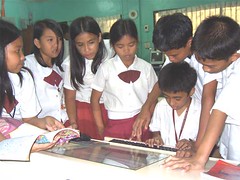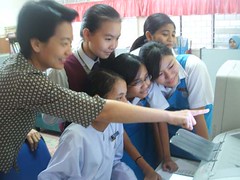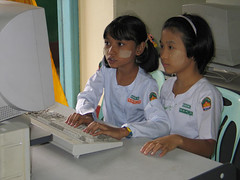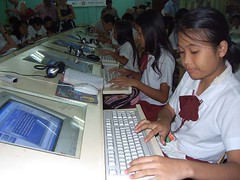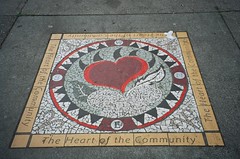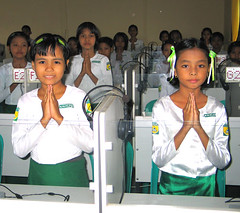
Despite many good intentions for developing countries to 'leapfrog' in technical terms, it is rarely yet the case. In many ways, this is because most technologies are designed and deployed in a developed country context, and thus have a number of limitations when trying to implement in a developing country. Additionally, many developing countries still don't have many specialists in ICT in education, and rely mainly on the precious few of enthusiastic, over-worked, pioneering teachers to drive change in their schools.
My work in SE Asia and Europe has prompted me to identify some issues which might help developing countries to deploy more cutting edge technologies in schools, despite the status quo of low bandwidth, poor infrastructure, low levels of training and support for teachers.
1. LAN-based Learning Management System (LMS) installationmany LMS have excellent features which would help schools in developing countries to make best use of their low levels of connectivity and relatively few ICT-based resources. Using an LMS with some learning content management features on a LAN is a good solution for enabling teachers to effectively share their 'homegrown' as well as externally acquired ICT resources. In addition, using LMS tools would enable students to get a 'feel' of using Internet-style applications without the need for broadband connectivity.
What are the barriers? Cost (especially in the case of commercial LMS), difficulty of installation (particularly in Open Source LMS), need for low cost LMS on appropriate platform (many low cost LMS run on Linux, which many teachers find hard to install).
2. Platforms based on mobile phone technologiesMany developing countries have very low numbers of PCs in schools, and low connectivity. However, many people are using mobile phones, and I have seen that many teachers have their own. In Thailand for instance, many people have mobile phones with quite advanced features. There is clearly potential for using mobile phones for teacher support and networking - e.g. sharing lesson plans, tips and advice. My previous post on
mobile learning has other ideas.
What are the barriers? Lack of models for use of such platforms, lack of knowledge among teachers in installing/configuring such platforms.
3. Platforms with a range of content creation and synchronisation optionsDue to low connectivity, schools in developing countries can benefit from platforms which can deal with offline content creation, which can synchronise/upload/download new resources and other content in a batch process. Surely RSS/XML technologies can handle this rather easily.
What are the barriers? Barriers are almost non-existent. Are there platforms out there already which have these capabilities?
4. Open content repositories with language agnostic approach Many educators in developing countries say that there is little content available in their languages. However, there are huge amounts of language-free content online in the form of pictures, maps, small sound files and other non-textual forms. But teachers and students cannot find such content due to the lack of index and search tools available in their own languages. It would be great to see more organisations taking a FOSS/OER approach to translating at least search interfaces in minority languages.
What are the barriers? Lack of capacity within developing countries to take the initiative on such issues, lack of awareness in developed countries to make such facilities available.
5. Training in dealing with low ICT infrastructure scenarios Many teachers in developing countries seem to think that they can only really use ICT if they have one or two pupils per computer in the computer lab. There are many strategies for using ICT without having a good level of infrastructure. For instance, I saw in one training session,
Chris Smith using just one keyboard and mouse together with a projection screen to engage a whole group. Basically, one person controlled the mouse, and another the keyboard. Both were passed around the room so that everyone used the equipment during the session - the only additional investment needed was a very long (but cheap) cable! Other strategies such as using web applications on a LAN, backing up websites using tracker programes (like
HTTracker) so they can be browsed offline when Internet connection is slow or disconnects often. There are many other strategies, but hardly any training or training content for teachers on this topic.
What are the barriers? Most training is planned still with an "ideal" situation in mind rather than a realistic view of the state of schools. Better needs analysis should be done when planning training.











